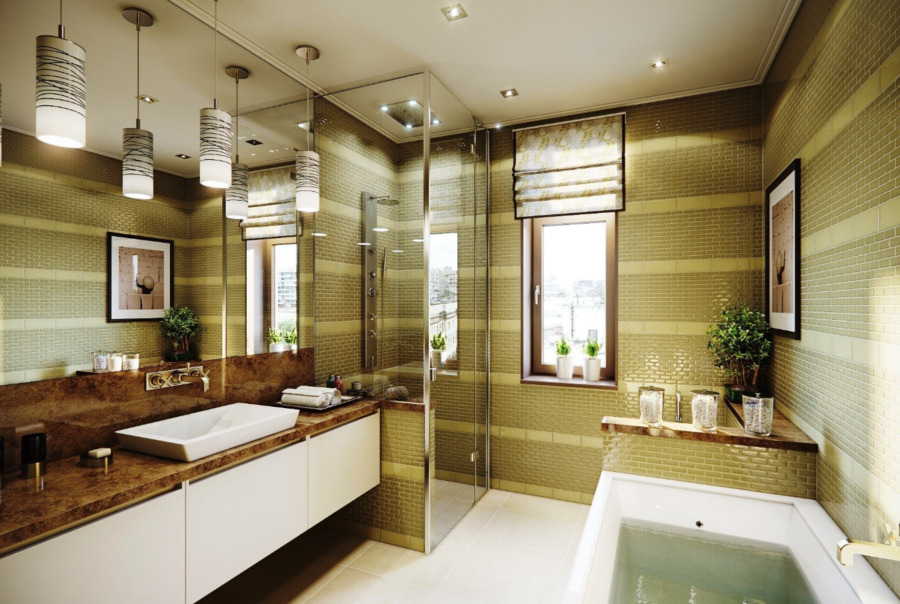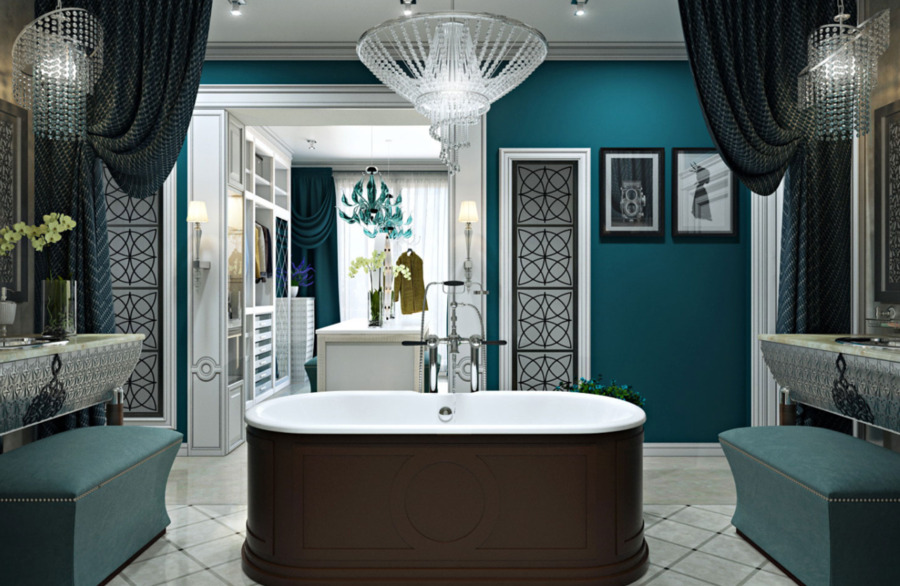In business environments, bathrooms frequently function as an unanticipated but crucial representation of a brand’s values, seamlessly fusing the aesthetic and the functional. Securing this balance between visual appeal and practicality presents a distinct set of difficulties for both designers and entrepreneurs. This article explores the nuances of striking a balance between these components, providing guidance and tactics to deal with bathroom design challenges in commercial settings.
Understanding the Balance
Aesthetic Importance
The visual appeal of a bathroom in a commercial setting goes beyond mere decoration; it encapsulates the essence of a brand, contributing significantly to the customer’s overall experience. For instance, in a luxury hotel, the bathroom’s design, from fixtures to lighting, is crucial in reinforcing the establishment’s luxurious image. Similarly, upscale restaurants leverage bathroom aesthetics to enhance their sophisticated ambiance, ensuring every detail reflects their commitment to quality and elegance.
Functional Necessities
Beyond aesthetics, commercial bathrooms must adhere to a set of functional imperatives. These spaces are subject to intense and frequent use, necessitating durable materials and designs that can withstand the rigors of high traffic. Maintenance and cleanliness are also paramount, with accessibility for all users as a non-negotiable requirement. Regulations, such as the Americans with Disabilities Act (ADA) in the United States, mandate specific standards for accessibility, underscoring the importance of functionality in design.

Challenges in Balancing Aesthetics and Functionality
Space Limitations
One of the most significant challenges in commercial bathroom design is effectively using available space. The constraints that many commercial venues face make it difficult to implement expansive design ideas. To overcome these limitations, creative thinking is required to maximize the functionality and aesthetic appeal of the available space.
Budget Constraints
Considerations pertaining to finances significantly impact the selection of materials and designs. A higher price tag is typically associated with materials that are of high quality and aesthetically pleasing; however, this may not be compatible with the budget for the project. A constant juggling act is required in order to strike a balance between the desire for a visually appealing space that also satisfies functional requirements.
Durability vs. Design
Selecting materials that fulfill both visual and durability criteria presents a dilemma. Designers frequently grapple with choosing between materials that are visually striking but less durable and those that offer longevity but may need more aesthetic quality. This balance is crucial for ensuring the space remains appealing and functional over time.
Consistency with Brand Image
Another challenge is to ensure that the bathroom’s design aligns with the commercial venue’s overall aesthetic and brand image. The restroom should not appear to be an afterthought but rather an essential component of the venue’s overall visual and thematic narrative.

Strategies for Achieving Balance
Innovative Materials and Technologies
Advancements in materials and technology offer solutions that no longer force a choice between beauty and resilience. For example, antimicrobial coatings and water-resistant finishes ensure surfaces remain hygienic and easy to clean without sacrificing visual appeal. These innovations enable designers to select materials that can both captivate the eye and endure the demands of high-traffic commercial use.
Customized Solutions
Opting for custom-designed bathroom accessories perfectly aligns between functional needs and aesthetic desires. This approach enables the creation of unique spaces that reflect a brand’s identity while addressing the practical requirements of a commercial bathroom.
Professional Collaboration
Collaboration among professionals from various disciplines — including interior designers, architects, and business owners — is pivotal in making informed decisions. This collective approach ensures that all aspects of the bathroom’s design are considered, from user experience to maintenance needs, resulting in a beautiful and practical space.
User-Centered Design
Incorporating feedback from end-users, such as customers and maintenance staff, into the design process is invaluable. This user-centered approach ensures that the bathroom not only meets aesthetic and functional standards but also addresses the practical needs and preferences of those who will use the space.
Conclusion
Commercial bathroom design is an intricate balance of practical functionality and visual appeal. A strategic approach to design that considers the space’s long-term functionality and its immediate impact on users is necessary to navigate this terrain. Customized solutions, cutting-edge materials, expert teamwork, and user-centered design philosophy can all be used to create commercial bathrooms that improve user experience and accurately represent the brand’s identity and dedication to excellence. Check out the options available at RAK Ceramics to help you plan your design,

I graduated from the California Institute of Technology in 2016 with a bachelor’s degree in software development.
